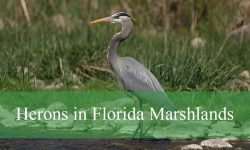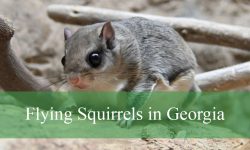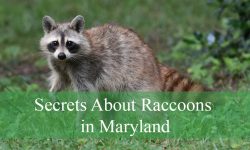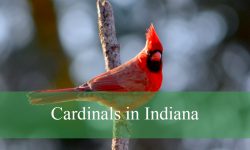Quail are among the most beloved game birds in Texas, known for their distinctive calls and striking plumage. The state’s diverse landscapes—from grassy fields to arid deserts—support several unique quail species. Whether you’re a birdwatcher, hunter, or nature enthusiast, learning to identify these birds adds to the enjoyment of exploring Texas wildlife.
This guide covers five quail species commonly found in Texas, highlighting their physical characteristics, behaviors, and habitats. From the familiar Northern Bobwhite to the elusive Mearn’s Quail, each species offers something special to discover. Detailed descriptions and photos will help you recognize these birds in the wild.
Understanding quail in Texas also involves appreciating their roles in ecosystems and the challenges they face. Habitat changes have impacted some populations, making awareness and conservation important. Dive into this article to get to know Texas quail better and learn how to spot them during your outdoor adventures.
Common Quail Found in Texas
Northern Bobwhite Quail (Colinus virginianus)
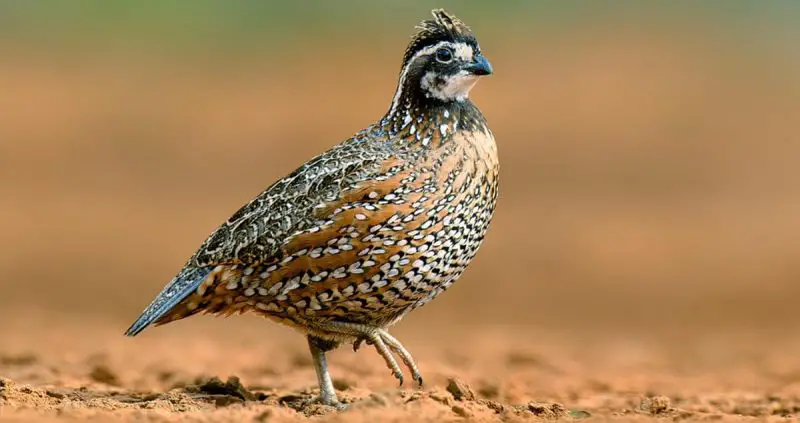
The Northern Bobwhite is a small, plump bird measuring about 9 to 11 inches in length with a wingspan of roughly 14 inches. Males are easily recognized by their white throat and eye stripe contrasting with a dark brown face, while females have a more muted buff-colored throat and face. Their bodies feature a mottled brown pattern that helps with camouflage in grassy and brushy environments.
Northern Bobwhites are ground-dwelling birds that prefer open woodlands, fields, farmland edges, and areas with dense brush for cover. They live in coveys—small social groups typically consisting of 10 to 30 birds—especially outside of the breeding season. Their diet mainly includes seeds, leaves, and small insects, which they forage from the ground.
In Texas, Northern Bobwhites are widely distributed across the eastern and central parts of the state. They thrive in agricultural landscapes mixed with native grasses and shrub cover. However, their populations have faced declines due to habitat loss and changes in land use, making habitat management crucial for their conservation.
A fun fact about Northern Bobwhites is that their call sounds like their name “bob-white” or “bob-WHITE,” a distinctive whistle that is often heard in early mornings and evenings during the breeding season. This call plays a vital role in maintaining covey cohesion and attracting mates.
Scaled Quail (Callipepla squamata)
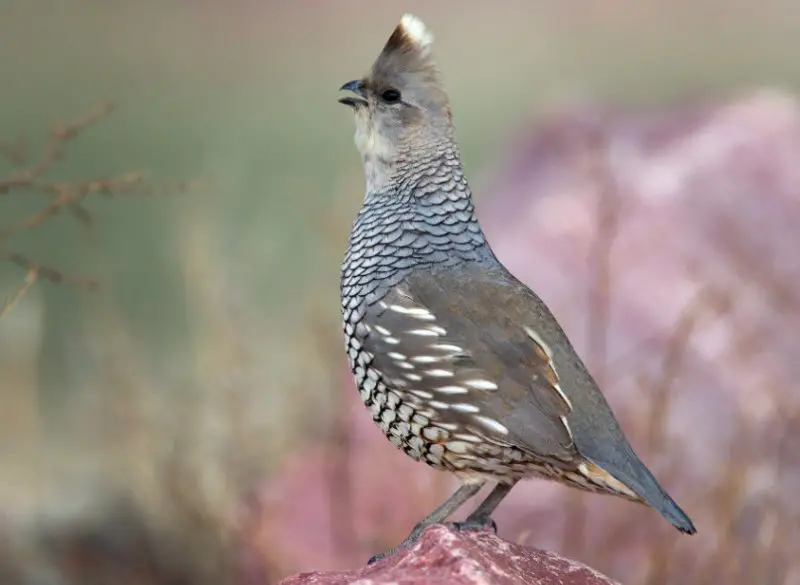
Scaled Quail, also called Blue Quail because of their bluish-gray appearance, are medium-sized quail measuring about 11 to 12 inches long with a wingspan near 16 inches. Their feathers have a unique scale-like pattern, which gives them their name and distinctive look. They have a short crest on top of the head that is less prominent than some other quail species.
These birds are primarily ground foragers, feeding on seeds, leaves, and small invertebrates. They prefer arid, open habitats such as brushy plains, rocky slopes, and desert edges, where they find both food and shelter. Scaled Quail are social birds and often form coveys of 10 or more individuals.
In Texas, Scaled Quail are mainly found in the western and southwestern regions, where the climate is drier and the landscape is characterized by desert scrub and mesquite brush. They adapt well to harsh environments with sparse vegetation, making them a signature species of Texas’ more arid areas.
An interesting fact about Scaled Quail is that they can go long periods without drinking water, getting most of their hydration from the moisture in their diet. This adaptation allows them to survive in the tough desert conditions where they live.
Gambel’s Quail (Callipepla gambelii)
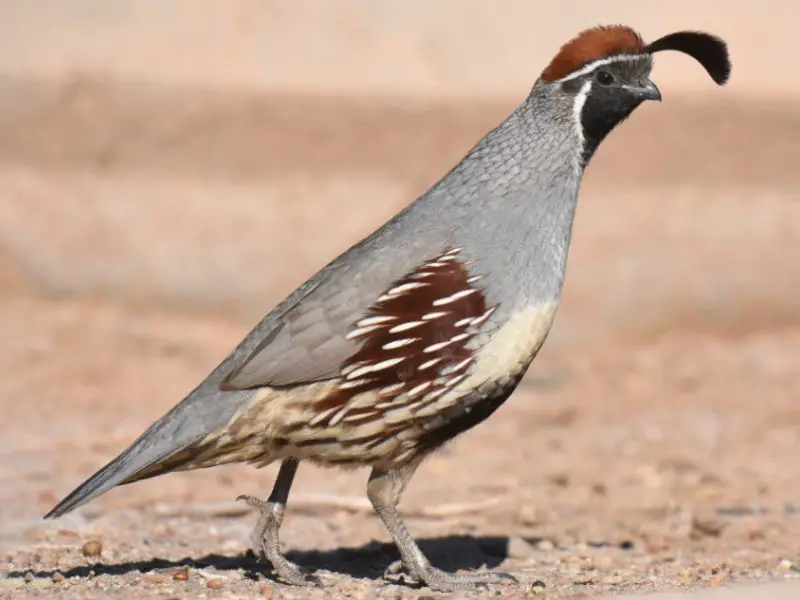
Gambel’s Quail is a medium-sized quail approximately 11 inches long, recognized by its striking black belly patch and distinctive forward-curving black topknot or plume on its head. Their plumage features a blend of gray, brown, and buff with white and black markings, which provide excellent camouflage in desert environments.
These birds inhabit desert scrub, thorny bushes, and rocky canyons, where they forage mainly on the ground for seeds, leaves, and insects. Gambel’s Quail are social and often seen in groups called coveys. They are highly vigilant and use alarm calls to alert the group of potential dangers.
In Texas, Gambel’s Quail populations are mostly limited to the westernmost parts of the state, particularly near the desert border regions with New Mexico and Mexico. They prefer habitats with dense brush and scattered trees in arid environments and are less common than Scaled or Northern Bobwhite Quail in Texas.
A fun fact about Gambel’s Quail is that they perform a dust-bathing behavior to keep their feathers clean and free from parasites. They dig shallow pits and roll in loose soil or dust, which helps maintain feather condition and skin health.
Mearn’s Quail (Cyrtonyx montezumae mearnsi)
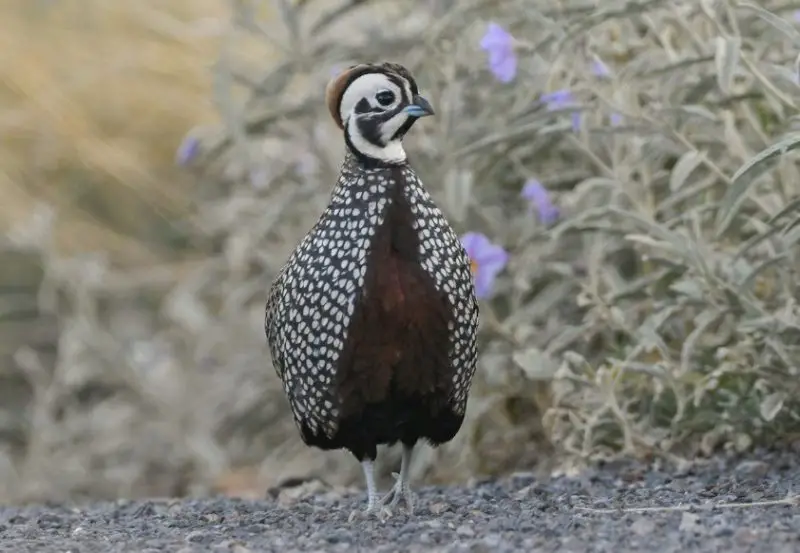
Mearn’s Quail, also known as Montezuma Quail, is a stout, rounded quail species measuring about 9 to 11 inches long. It is notable for its striking black and white facial markings and intricate scaled pattern across its body. This species’ plumage offers excellent camouflage in the dense forest floors and rocky areas where it resides.
Unlike many quail, Mearn’s Quail tends to be secretive and shy, often hiding under thick brush or rocks. They prefer mountainous and rugged terrain with dense oak woodlands, pine forests, and grassy clearings. Their diet consists largely of seeds, tubers, and insects they forage by scratching leaf litter on the ground.
In Texas, Mearn’s Quail is found only in limited, mountainous southwestern areas near Big Bend National Park and adjacent regions. Due to their elusive nature and restricted range, they are less studied compared to other quail species in Texas.
A unique fun fact about Mearn’s Quail is that they nest in shallow scrapes on the ground hidden among dense vegetation. The female incubates the eggs alone, while males may help guard the territory but do not assist with incubation.
California Quail (Callipepla californica)
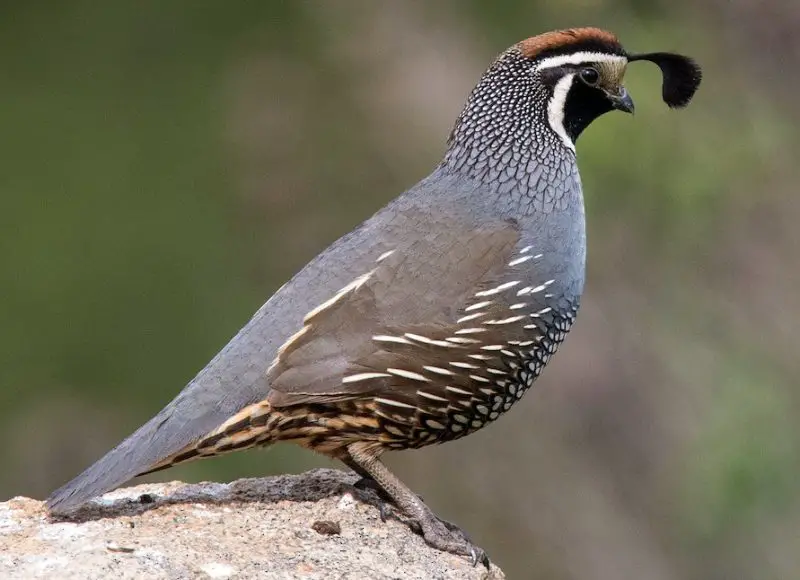
California Quail is a medium-sized quail about 10 to 12 inches long, well known for its prominent curved black plume or topknot on the forehead. Their plumage consists of gray, brown, white, and black patterns, with males showing more vivid markings than females. This species has a rounded body and short tail, adapted for quick ground movement.
These quail prefer habitats like oak woodlands, chaparral, brushy slopes, and suburban areas with thick vegetation. They forage on seeds, leaves, and small insects, often scratching the ground to uncover food. California Quail are highly social and live in coveys that provide safety in numbers.
In Texas, California Quail are not native but have been introduced or occasionally escape from captivity. They can be found in some localized areas in western Texas, where suitable habitat exists. Their presence is more common in western states, but Texas has small pockets supporting these birds.
A fun fact about California Quail is their “Chi-ca-go” call, a distinctive 3-syllable whistle that sounds like they are saying the city’s name. This call is used for communication between covey members and during courtship.
FAQs About Quail in Texas
What types of quail are commonly found in Texas?
Texas is home to several quail species, with the most common being the Northern Bobwhite, Scaled Quail, Gambel’s Quail, Mearn’s Quail, and California Quail. The Northern Bobwhite is widespread, while Scaled and Gambel’s Quail are more common in the arid western parts of the state.
How can I identify a Northern Bobwhite quail?
Northern Bobwhite males have a distinctive white throat and eye stripe contrasting with a dark face, while females are more buff-colored. Both have mottled brown plumage. Their call sounds like “bob-white,” which is a helpful identification clue.
Where do Scaled Quail usually live in Texas?
Scaled Quail prefer dry, open habitats such as desert scrub, rocky slopes, and mesquite brush, mainly in the western and southwestern parts of Texas. They are well adapted to arid conditions.
Are Gambel’s Quail common in Texas?
Gambel’s Quail are less common than other species and are mostly found in the far western desert regions of Texas, near New Mexico and Mexico. They inhabit desert scrub and thorny brush areas.
What is unique about Mearn’s Quail?
Mearn’s Quail, or Montezuma Quail, is secretive and found in limited mountainous areas in southwestern Texas. It has striking black-and-white facial markings and prefers dense oak and pine woodlands.
Is California Quail native to Texas?
No, California Quail are not native to Texas but have been introduced in some areas. They are more common in western states but can occasionally be found in localized parts of western Texas.
How do quail behave socially?
Most quail species in Texas live in groups called coveys, especially outside of the breeding season. These social groups help with protection and foraging efficiency.
What do Texas quail eat?
Quail diets mainly consist of seeds, leaves, and small insects. They forage primarily on the ground, scratching in leaf litter or soil to find food.
How do quail adapt to Texas’ climate?
Scaled and Gambel’s Quail have adaptations to survive dry and arid environments, such as obtaining water from their diet and being able to go without direct drinking for long periods.
Are quail populations in Texas declining?
Some species, like the Northern Bobwhite, have experienced population declines due to habitat loss and changes in land use. Conservation and habitat management efforts are important to support healthy quail populations.

